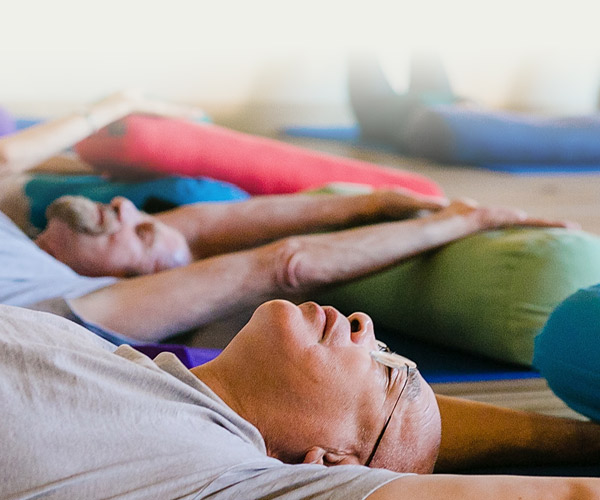 What is the difference between yoga, prayer, and meditation? Does the belief in one or two eliminate the other(s)? At some point on our journey, we begin to realize the power of our thinking. Thoughts of exclusion bring pain and suffering, while inclusive thoughts are healing and joyful—to me! If I see a world of separate bodies, each with unique ideals, including my own, then my yoga, prayer, and meditation are to see them the same. How else could I ever be at peace?
What is the difference between yoga, prayer, and meditation? Does the belief in one or two eliminate the other(s)? At some point on our journey, we begin to realize the power of our thinking. Thoughts of exclusion bring pain and suffering, while inclusive thoughts are healing and joyful—to me! If I see a world of separate bodies, each with unique ideals, including my own, then my yoga, prayer, and meditation are to see them the same. How else could I ever be at peace?
The world is full of different religions and thought systems. Each one “includes” by way of exclusion. Isn’t it all political? You’re either in or out. If you don’t think “my way” or “our way,” then it’s the wrong way. It turns many away from a spiritual practice—the purpose of which is to look closely at our thoughts and beliefs that separate. Why? Because they bring conflict, pain, and suffering.
Yoga as the Practice of Joining
Yoga means “to join,” and therein lies the answer to just about every problem. Why would I pray but to join for a unified answer that is not “my own?” To join is to heal my mind. Have you ever been in a dire situation and, after much resistance, made a conscious decision to let go and join? Did you notice how everything got better as peace came through—to you? What is that? Could joining be the recognition that there is nothing lost in the release? Could this ongoing recognition be what life is worth living for?
The Common Goal of Peace
Some meditate for peace. Some pray for peace. Some practice yoga for peace. But what if the prayer of the heart is always answered? Wouldn’t it be vitally important to go deep and find out what it is? What if our life was an outer reflection of our inner thoughts? You know—what I think about, I bring about. Instead of using fear to materialize an outer need or want that brings temporary happiness, what would life look like with a mind cleansed of desire and flooded with peace and happiness, as Buddha taught?
Whether yoga, meditation, or prayer, I only need the desire to get in touch with the darkness and let it up to be released. The result is beautiful—no more covering, hiding, or suppressing. We only need a little willingness to go through the mud to get to the flower, our true Self.
Overcoming Doubt and Fear
The problem is that we don’t think such a state of mind exists because we cannot see it nor get past the voice of doubt, fear, scarcity, jealousy, resentment, pride, etc. But I meditate to move through these thoughts that hurt me. Similarly, would I not pray for help in releasing my harmful thinking and join with my peaceful Self? Is it not my “yoga” to do the inner work that brings the release?
Beyond the Body: A Holistic Approach
If I reduce meditation, prayer, or yoga to the body alone, I will only find conflict. If I make my meditation about the body or I pray for a better outcome for the body alone, the results will be temporary at best. We often become frustrated if we can’t “do the Yoga.” Or we lose hope when our prayers are not answered how we want them answered. Or we abandon a meditation practice because it takes too much time and effort.
A commitment to sit, meditate, pray, or practice yoga is very helpful. But whatever works in formal practice must also work in every other moment throughout the day. Why not watch your mind for thoughts of separation and seek to join on a never-ending basis? Be aware of your deepest fears and pray unceasingly for their release. Gently watch for thoughts of separation and fear throughout the day, bring your prayer, meditation, and yoga to life, and watch it change.
In summary, prayer, yoga, and meditation each offer unique benefits while sharing the common goal of fostering connection—whether to the divine, the self, or the present moment. Together, they create a balanced approach to physical, emotional, and spiritual well-being, enriching our journey toward inner peace.
A Class for Further Exploration
You’ve made it to the end—great work! Treat yourself to this Avita class on YouTube, which begins with insightful comments on this topic. The sequence is thoughtfully designed to address shoulder restrictions in a gentle, effective way. If you’re new to Avita Yoga, feel free to follow along without using sandbags. Already a subscriber to Avita Online? Click here to access the class directly.
Namaste.
Jeff





